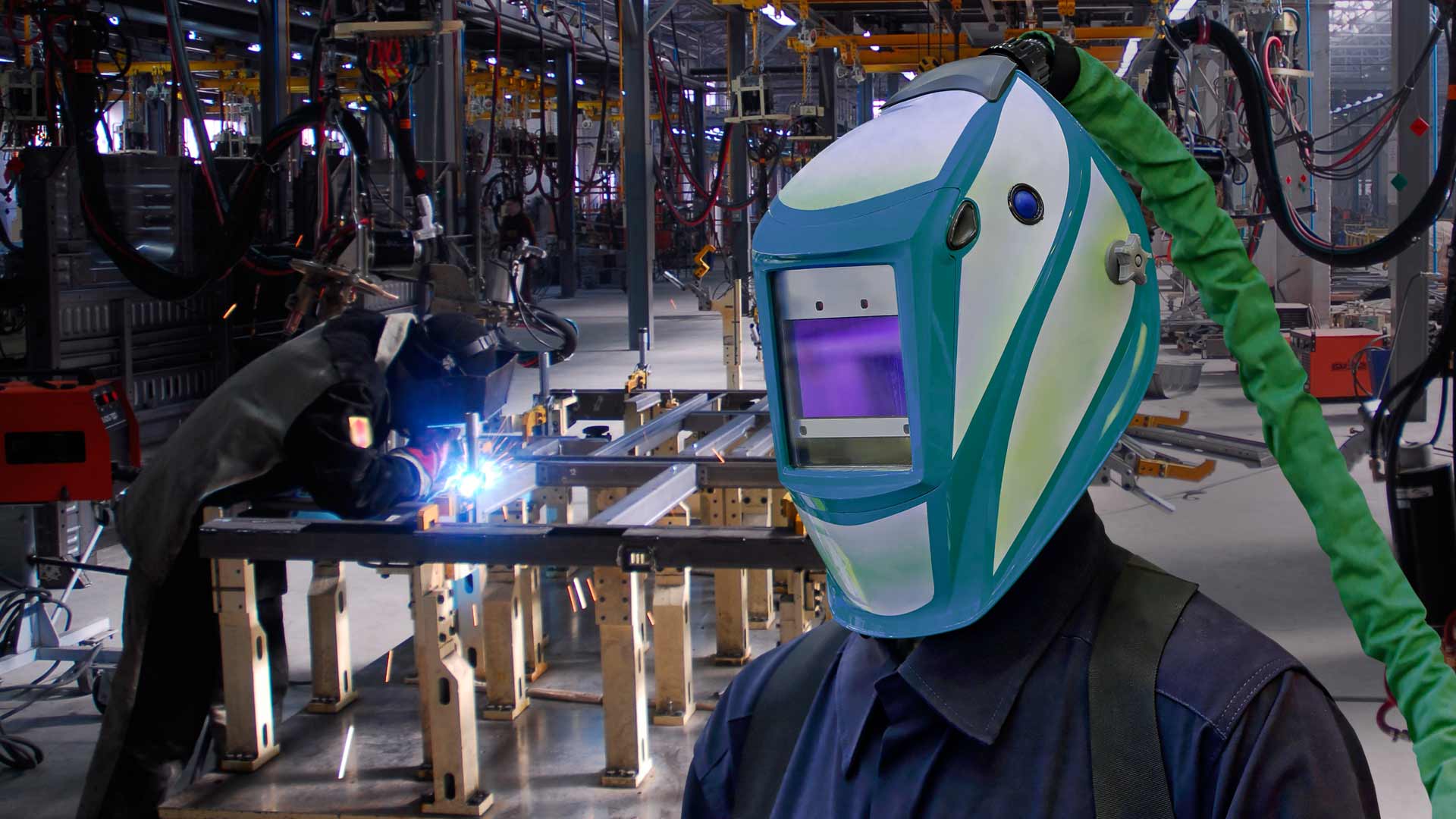Top 3 Reasons to Retire Your PAPR
February 8, 2017
Powered air-purifying respirators (PAPRs) are widely used in manufacturing environments where air quality is a problem. These hoods and masks clean workers’ air and protect them from harmful dusts and fumes. Employers know they are legally required to provide a safe and healthy workplace, and they know PAPRs are listed by OSHA as a possible solution. Wanting to protect their workers and comply with regulations, it’s no surprise manufacturers reach for PAPRs.
PAPRs are marketed as affordable, flexible solutions for providing clean air. On paper—say, in a product catalogue—this sounds logical. But, in practice, PAPRs are a more complicated option than they seem. In fact, they have major drawbacks. Let’s explore just three of them.
The Cost of PAPRs:
If the initial purchase cost of a PAPR were a manufacturer’s only outlay, then cost might not be an issue in this discussion. But we know that’s not the case. Not only does a manufacturer often have to pay for many PAPR units (a not insignificant sum), but the costs are continuous, rather than one-time.
The recurring cost that has become so burdensome to operations that use PAPRs is filter replacement. The one-use filters used in PAPRs have no self-cleaning mechanism, and they get dirty quickly. And the filters are not inexpensive. Much like the relationship between printers and ink cartridges, replacement filters are a profit center for PAPRs. In addition, the PAPR unit itself has a lifespan of two to four years, meaning it is actually a recurring cost, as well.
The Inconvenience of PAPRs:
In practice, no one enjoys wearing a PAPR. Workers understand the need for air filtration, but the units are cumbersome and unpleasant to work in. The inconvenience begins before the worker even puts the hood on. First, the worker must visit the battery-charging station and hope to find a fully charged battery. Next, the worker must put the unit on, without delay. Some PAPRs are fitted, and some are not. Either way, putting one on is not like throwing on a hardhat. Also, as many workers have discovered, PAPRs don’t work well with facial hair. PAPRs pose a challenge to anyone hoping to sport a “Duck Dynasty” look.
The biggest danger in these inconveniences is that workers might decide it’s just easier not to use the PAPRs. This is especially possible if it’s a short task or a day with only intermittent welding or dust creation. Workers are under extreme time pressures, and any inconvenience is a serious burden. And when workers forgo safety and health measures, there are consequences.
The Facility-wide Consequences of PAPRs:
When workers use PAPRs, the air in the rest of the facility goes untreated. Air quality in PAPR-using plants is often visibly compromised. Dusts and fumes are made of microscopically small particles that can—and do—travel widely. Inevitably, other workers are exposed—office workers, those working in other departments, visitors and so on. Over time, even small exposures can add up to serious consequences.
Facility aesthetics are a concern, as well. The air above those PAPR hoods will increasingly fill with dust and haze. This makes it hard for a company to make a good impression. Customers, visitors, partners, new recruits—they will see and smell this air quality. In today’s competitive environment, no company can afford to make a bad impression.
PAPR use can also lead to housekeeping problems. Unfiltered dust can accumulate on equipment and electronics. This can cause them to malfunction or fail. The housekeeping costs and potential for capital degradation are yet more costs associated with PAPR use.
Alternatives
The alternatives to PAPRs include a variety of facility-wide air filtration solutions. These solutions address all of the shortcomings of PAPRs. For example, while an industrial fume extraction system might cost more than an initial layout for PAPRs, the long-term costs are competitive or lower. Filter costs, alone, will plummet with a fume extractor that features self-cleaning mechanisms and easy dust removal.
A facility-wide solution is vastly more convenient for workers and managers, as well. Workers no longer need to suit up and spend the day like a hazmat worker. They can work more comfortably and more effectively, knowing that dust and fumes are being pulled away from their breathing zones. The risks of working without protection drop to zero when a facility-wide solution is in place.
The benefits of a fume extractor are spread more widely, as well. Every worker in the facility is protected, not just the one doing the welding or cutting who has the hood on. Housekeeping and aesthetic concerns disappear when a fume extraction system is circulating and treating the entire air in a facility.
In short, it pays to look at the big picture. Short-term, personal solutions to dusts and fumes create costs and inconveniences that become long-term problems. Stepping back and addressing air quality from a higher perspective can be more effective at saving money and protecting workers.
